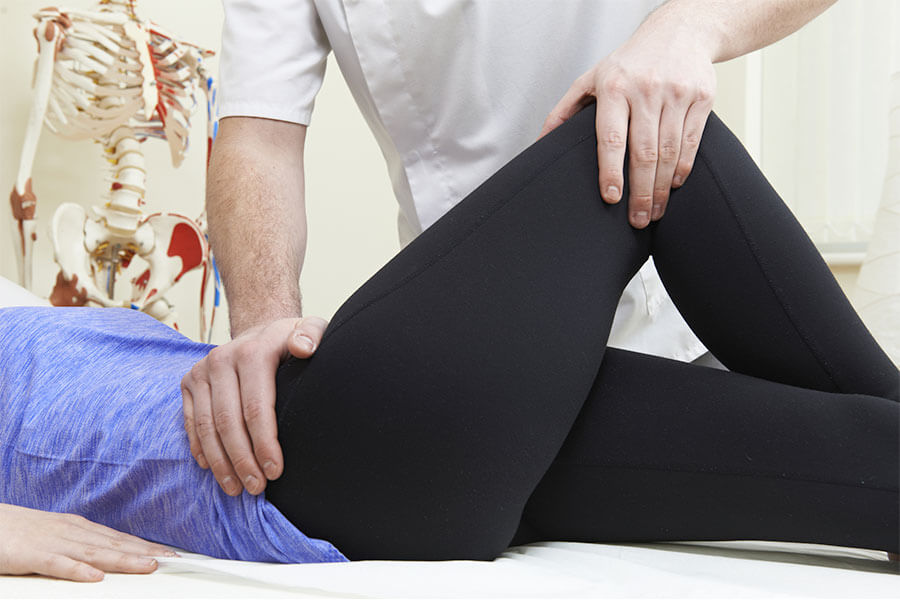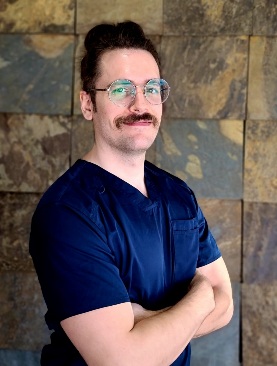Specific or combined pain management therapies can significantly reduce arrest and prevent pain, stiffness and limited mobility, and assist in healing. Some therapies, such as spinal adjustment, are effectively and safely administered only by our Doctors of Chiropractic, while others serve as an at-home compliment to your total care. What follows is a common-sense guide to managing pain. Consider each and apply those that respect your condition, fitness level and age. If you have any questions please consult with your chiropractor, who will be more than happy to offer practical guidelines and suggestions.
A great many pain episodes begin with dysfunction, constriction or spasm within the body that creates discomfort and leads to decreased activity and impeded circulation, causing tissue stiffness and atrophy that serves as a perfect environment for further damage and decay, and so on, fostering a vicious cycle of pain. By employing simple stretching and strengthening techniques, you can make great strides in managing and preventing pain and improving your overall health.
It is important to stretch every day, paying particular attention to areas that have been injured, are involved in pain episodes, or are especially tight and thus prone to injury. Getting into the habit of performing gentle stretching before exercise is a perfect way to help prevent muscle spasm and cramping. Always be aware that cold muscles are tense and resistant to movement, so do not attempt to increase their flexibility by performing deep stretching until they are warm; rather use this stage to simply invite blood flow and assist in mobility.
After exercising, when your muscles are warm, you can do some deeper stretching to improve and increase your range of motion. This deeper stretching pulls needed circulation into injured or vulnerable soft tissues to help them heal and helps prevent further injury. The combination of increased circulation and range also provides genuine pain reduction and prevention.
Some stretching rules of thumb:
- Warm up before deep stretching. Ten to fifteen minutes of aerobic exercise, such as walking, swimming or riding a bike, warms muscles enough to allow them to stretch fluidly and gain range while minimizing risk of injury.
- Don't stretch to the point of pain. When performed properly, stretching should feel good and provide relief from pain, not cause it. Flexibility is often a random feature among people--some who are of otherwise poor fitness may enjoy an amazing range of motion through sheer genetic luck or because they have gone out of their way to maintain the agility they had as children. Others may be as fit as athletes and have a difficult time touching their toes. In short, don't attempt to emulate other people when stretching; instead pay attention to your own limits. Stretch only to the point where you encounter comfortable pressure and hold for 20-30 second intervals. Take your time progressing. Noticeable improvement can take many weeks, even months, to accomplish, but the act of stretching will benefit you immediately, even if you see no obvious gains in flexibility.
- Breathe deeply throughout. Make sure you aid your muscles in getting the oxygen they need to heal and relax by breathing deeply throughout your stretching.
Exercise
Many people actually wince when they contemplate the very idea of exercise, so it's perhaps important to take a moment to define what it is. Exercise is any controlled movement that elevates the heart rate for a set period of time, from as few as five minutes to start, with the ultimate goal being 30-60 minutes at least 5 days a week. The key to a successful exercise program is to have a realistic idea of your current fitness level and your time and lifestyle constraints, and to set distinct, attainable goals. Here are some tips to consider as you formulate a fitness program:
- Pick something you like: Exercise is most easily incorporated into everyday living when it's not something you dread. Walking, dancing, golfing, swimming, hiking, biking, tennis, and even housework are all legitimate forms of exercise. The important part is to keep your movements controlled and constant for a set period. Switch exercises often to avoid routine and to reach all areas of your body.
- Select an exercise that suits your fitness level and condition: Deciding to take up running when you haven't done it before or recently is a recipe for injury and discouragement. Also, certain conditions may limit what exercises are available to you, so talk to your doctor so that he can help you devise a program that will be easy for you to stick with and not aggravate an existing condition.
- Set realistic and motivating goals: You may be of a fitness level that starting off with a five- or ten-minute walk around the block serves as a perfectly reasonable and respectable beginning. Or you may be of a superior fitness level, but need new accommodations due to injury. In any case, set reasonable goals so that you neither under-tax your body and sacrifice gains in fitness, nor overtax your vulnerable areas and invite a worsening of your condition. Talk to your D.C. about reasonable goals that will help keep you on course and free of injury.
Controlling pain episodes
For all our work and planning, pain episodes are sometimes inevitable. Controlling and limiting pain is important, not only because it lessens suffering, but because the sooner you're up and around the quicker your body will generally be able to heal. If possible, try to schedule an appointment with your Chiropractor as soon as pain occurs so that together you can implement some curative treatments to control your pain, such as spinal adjustment, Spinal Decompression Therapy, massage, ultrasound or other therapeutic service. In cases when an appointment is unwarranted or inconvenient, at-home treatments can greatly reduce pain and suffering, including:
- Heat: In situations where inflammation is not present, heat can be a very effective way to relax muscle tension and spasm and invite increased blood flow to affected areas. Relaxing in a hot bath or whirlpool can provide immediate relief from muscular aches, cramping and stiffness. Also helpful are heat packs or pads and warming creams or ointments.
- Cold: In situations of swelling, redness, heat and other indications of inflammation, cold therapy, such as cold packs or ice, is indicated to improve healing circulation to injured tissues and to subdue the body's inflammatory responses. In some cases, altering heat and cold for 20-minute intervals works to both decrease inflammation and relax constricted muscles, so talk to your Chiropractor about whether this alternating therapy suits your condition.
- Medication: Used sparingly, over-the-counter medication can greatly relieve pain and help reduce inflammation of injured areas. Caution should be exercised when using OTC medications, however, since some can cause internal bleeding, conflict with other medications, interact negatively with alcohol or produce other unpleasant side effects. Long-term use of OTC pain medication may cause specific organ damage and create rebound headaches in some individuals, so try to avoid its continued use if possible.
- Prescriptions: Your M.D. may prescribe prescription medication to help relieve pain. Such medication can provide substantial relief, but almost all can have negative effects, whether immediately or over the long term. Talk to your D.C. about all pain medications you are taking so that together you can work toward limiting or eliminating their use.







